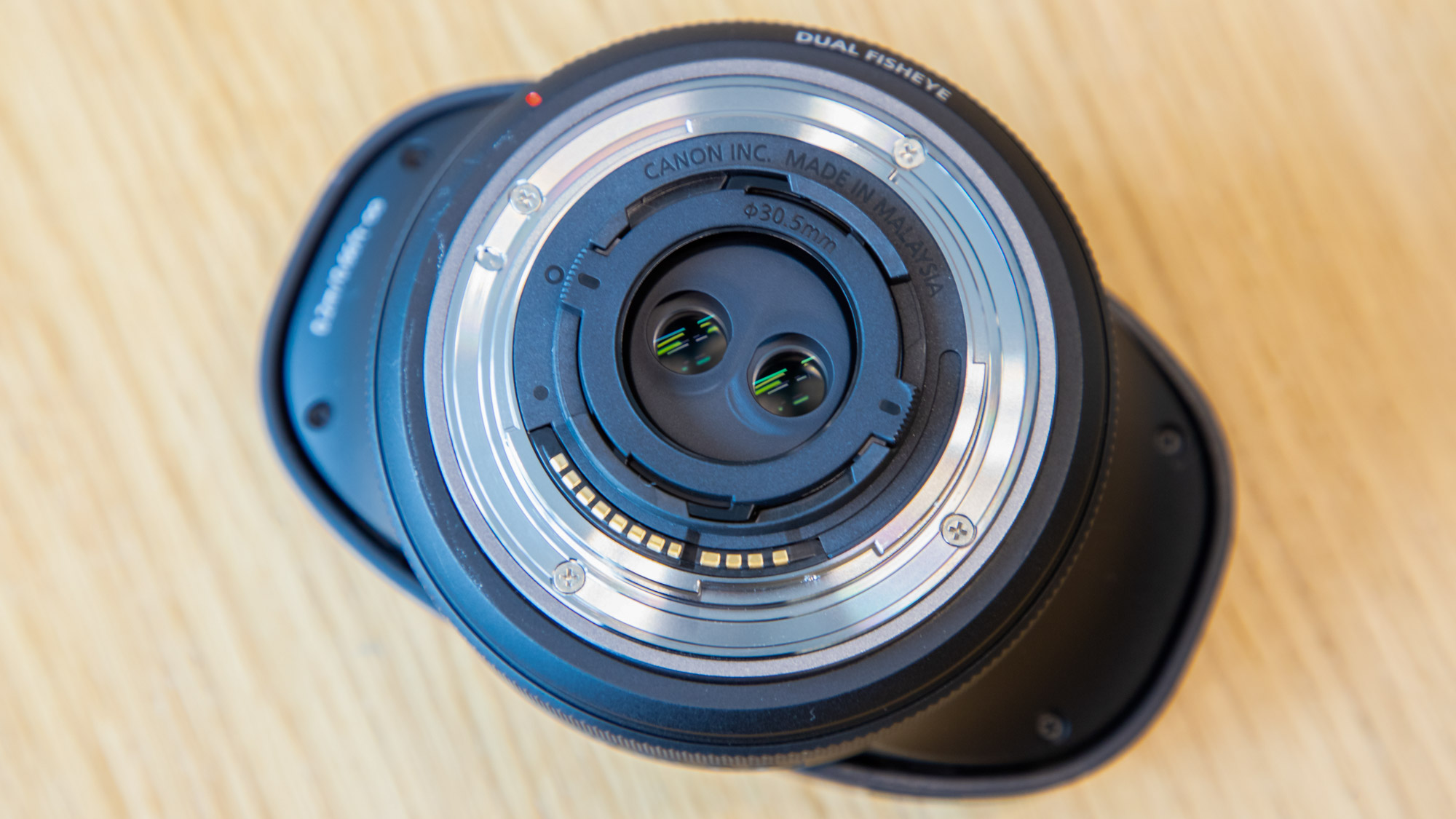
Canon has doubled down on its lenses for VR content creators with its second stereoscopic optic: the Canon RF-S 3.9mm f/3.5 STM Dual Fisheye lens.
I first saw a prototype of the lens at The Photography & Video Show earlier this year, where Canon explained that "we are heavily invested in virtual Reality and we want to get these products out as soon as possible." The company wasn't kidding, as the Canon RF-S 3.9mm f/3.5 STM Dual Fisheye has now come to fruition.
It's the follow-up to the full-frame Canon RF 5.2mm f/2.8L Dual Fisheye lens released at the beginning of 2022. Unlike the existing model, the new 3.9mm version isn’t an L-series optic – and it's an RF-S lens, designed for Canon’s APS-C mirrorless cameras, which helps keep the price down.
It carries an RRP of $1,099 / £1,349 / AU$1,999, which makes it around 35% less expensive than the existing full-frame model.
In addition, the Canon EOS R7 body that it's been designed to work with at launch is also significantly cheaper than the EOS R5 that the RF 5.2mm was initially built to pair with (though today it is also compatible with the R6 Mark II).
So, individually and as a combined package, it costs significantly less and will lower the barrier to entry for anyone interested in creating virtual reality content.
While the RF-S 3.9mm will only work with the EOS R7 when it launches this month, Canon said that it will be expanding lens compatibility to other models down the line. See the test footage below, taken with a beta lens sample on an R7 shot at 4K 25p.
The best camera deals, reviews, product advice, and unmissable photography news, direct to your inbox!
Above: Straight-out-of-camera sample footage
The twin fisheye lenses have an ultra-wide focal length of 3.9mm, which works out to be 6.24mm in full-frame terms once you’ve factored in the 1.6x APS-C sensor crop factor, but that’s still an astonishing 144º field of view.
Canon added that "the lens uses a 60mm inter-pupillary distance which resembles human eyes to create a realistic 3D viewing experience."
Also on the spec sheet you’ll find an STM (Stepping Motor) in the left lens for fast and smooth autofocus, though this is One-Shot AF for quick and precise setup of your shots. There is no servo mode for continuous AF, so to adjust focus once filming you can use the Adjust switch on the side of the lens barrel.
There's also a large Control ring on the barrel, which works best as a manual focusing ring but can be customized for other settings such as ISO.
The Canon RF-S 3.9mm f/3.5 STM Dual Fisheye is smaller and lighter than the RF 5.2mm f/2.8L Dual Fisheye, yet manages to pack in two ultra-low dispersion lenses to ensure high image quality and prevent aberrations.
The lenses also benefit from Canon’s premium Air Sphere Coating – the first time this features on a non-L-series optic – to reduce ghosting and flare and deliver pristine image quality.
I was initially told that the Canon RF-S 3.9mm f/3.5 STM was slated for release in July, but Canon has since confirmed that it will go on sale in June at a price of $1,099 / £1,349 / AU $1,999.





Take a look at the best Canon RF lenses for mirrorless cameras, and don't forget that EOS R bodies can easily adapt the best Canon lenses for DSLRs.

In addition to being a freelance photographer and filmmaker, Dan is a bona fide expert on all things Canon and Adobe. Not only is he an Adobe-certified Photoshop guru, he's spent over 10 years writing for specialist magazines including stints as the Deputy Editor for PhotoPlus: The Canon Magazine, Technical Editor for Practical Photography and Photoshop Editor on Digital Photo.



